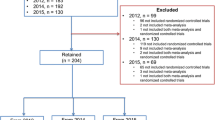Abstract
An abstract submitted for a scientific plastic surgical meeting has several characteristics on the basis of which the abstract may be selected for presentation at the meeting. To what extent these characteristics influence the perceived overall scientific merit of the abstract is incompletely understood. We assessed the contribution of each of six characteristics: originality, number of cases, method of study, period of follow-up, justification of conclusions, and expected impact on the participants at the meeting. The ratings by four peer reviewers of the characteristics of each of 194 abstracts submitted for the 2001 annual scientific meeting of the European Association of Plastic Surgeons (EURAPS) were compared with the selection of the abstracts for the final program of the meeting. We found the characteristic 'methodology' to contribute significantly more to the selection of the abstracts on Clinical Studies than any of the other characteristics. For Basic Research abstracts all of the six characteristics were found to equally contribute to the selection for the final program. In the Aesthetic Surgery category, 'conclusion' and 'impact' were slightly more influential than other characteristics.


Similar content being viewed by others
References
Altman DG (1991) Relation between several variables. In: Practical statistics for medical research. Chapman & Hall, London, pp 325–364
Altman DG (1991) Relation between two continuous variables. In: Practical statistics for medical research. Chapman & Hall, London, pp 277–324
Black N, van Rooyen S, Godlee F, Smith R, Evans S (1998) What makes a good reviewer and a good review for a general medical journal? JAMA 280:231–233
Gardner MJ, Machin D, Campbell MJ (1986) Use of check lists in assessing the statistical content of medical studies. BMJ 292:810–812
Mazzola R (2001) Committees 2000–2001. In: European Association of Plastic Surgerons' twelfth annual meeting—programme. EURAPS, Milan
McNamara DA, Grannell M, Watson RG, Bouchier-Hayes DJ (2001) The research abstract: worth getting it right. Ir J Med Sci 170:38–40
Montgomery AA, Graham A, Evans PH, Fahey T (2002) Inter-rater agreement in the scoring of abstracts submitted to a primary care research conference. BMC Health Serv Res 2:8
Rennie D (2002) Fourth International Congress on Peer Review in Biomedical Publication. JAMA 287:2759–2760
Rothwell PM, Martyn CN (2000) Reproducibility of peer review in clinical neuroscience. Is agreement between reviewers any greater than would be expected by chance alone? Brain 123:1964–1969
Rubin HR, Redelmeier DA, Wu AW, Steinberg EP (1993) How reliable is peer review of scientific abstracts? Looking back at the 1991 Annual Meeting of the Society of General Internal Medicine. J Gen Intern Med 8:255–258
Siegelman SS (1991) Assassins and zealots: variation in peer review. Radiology 178:637–642
Steen LPE van der, Hage JJ, Kon M, Mazzola R (2003) Reliability of a structured method of selecting abstracts for a plastic surgical scientific meeting. Plast Reconstr Surg (in press)
Strayhorn JJr, McDermott JFJr, Tanguay P (1993) An intervention to improve the reliability of manuscript reviews for the Journal of the American Academy of Child and Adolescent Psychiatry. Am J Psychiatry 150:947–952
Vilstrup H, Sorensen HT (1998) A comparative study of scientific evaluation of abstracts submitted to the 1995 European Association for the Study of the Liver Copenhagen meeting. Dan Med Bull 45:317–319
Acknowledgements
The authors are grateful for the invaluable assistance of Karen Rogerson, former secretary to EURAPS, and for the efforts of the members of the EURAPS Scientific Committee, all of whom were reviewers of the abstracts submitted for the 2001 EURAPS meeting in Helsinki: J. Baruch (France), W. Boeckx (The Netherlands), H. Eder (Belgium), D.V. Egloff (Switzerland), O. Erol (Turkey), M. Frey (Austria), H. Holmstrøm (Sweden), N. Pallua (Germany), R. Sanders (United Kingdom), M. Schiavon (Italy), A. Tapia (Spain), and E. Tukiainen (Finland). We thank Petra H.L. Koster and Arjan H. Buist for their suggestions regarding the statistical analysis of our results.
Author information
Authors and Affiliations
Corresponding author
Rights and permissions
About this article
Cite this article
van der Steen, L.P.E., Hage, J.J., Kon, M. et al. Contribution of six characteristics of an abstract to the acceptance of that abstracts for the EURAPS annual scientific meeting. Eur J Plast Surg 26, 192–197 (2003). https://doi.org/10.1007/s00238-003-0511-z
Received:
Accepted:
Published:
Issue Date:
DOI: https://doi.org/10.1007/s00238-003-0511-z




